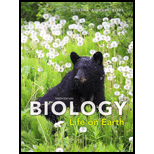
Fill-in-the-Blank
An atom consists of an atomic nucleus composed of positively charged_______ and uncharged _________. The number of positively charged particles in the nucleus determines the________ of the element. Orbiting around the nucleus are ________ that occupy confined spaces called __________. LO2
To review:
An atom consists of an atomic nucleus posed of positively charged ________ and uncharged _________. The number of positively charged particles in the nucleus determines the _______ of the element. Orbiting around the nucleus are _________ that occupy confined spaces are called ________.
Introduction:
Atom is the smallest unit of the element and every atom of that element carry all the chemical properties of that element. Atom also has its own composition and is composed of more smaller particles. Three Subatomic particles together constitute the structure of the atom.
Explanation of Solution
Atom is the basic structural unit of the element. It cannot be further separated into simpler substances and even cannot be converted into another substance just by performing the ordinary chemical reactions. Atoms are composed of even smaller particles; these are considered as subatomic particles. These are neutrons (n), protons (p+), and electrons (e-). Protons carry a positive charge, electrons carry a negative charge, and neutrons carry no charge. Atoms containan equal number of electrons and protons thus providing the overall neutral charge to the atom as their positive and negative charge cancel each other.
Electrons and protons together reside in the center of the atom that is called an atomic nucleus. The small electrons rotate in a continuous rapid motion around the atomic nucleus. The path at which the electrons rotates around the atomic nucleus is considered as the electron shell. Protons present in the nucleus denotes the atomic number
An atom consists of an atomic nucleus posed of positively charged protons and uncharged neutrons. The number of positively charged particles in the nucleus determines the atomic number of the element. Orbiting around the nucleus are electrons that occupy confined spaces called electron shells.
Want to see more full solutions like this?
Chapter 2 Solutions
Biology: Life on Earth
- An isotope of sodium (Na) has a mass number of 22. How many neutrons does it have? a. 11 b. 12 c. 22 d. 44arrow_forwardWhat atom has only one proton? a. hydrogen c. a free radical b. an isotope d. a radioisotopearrow_forwardSilver (Ag) atoms contain fewer electrons, neutrons and protons than Gold (Au) atoms. To change Silver into Gold, a chemist might try to add nucleus, because these particles are the ones that to the determine the identity of an atom. protons and electrons neutrons electrons neutrons and electrons protonsarrow_forward
- A nitrogen atom has 7 protons, and the most commonisotope of nitrogen has 7 neutrons. A radioactive isotopeof nitrogen has 8 neutrons. Write the atomic number andmass number of this radioactive nitrogen as a chemicalsymbol with a subscript and superscript.arrow_forwardThe most abundant form of carbon has an atomic number of 6 and a mass of 12. A small amount of carbon exists as the isotope carbon 14. What number of protons, neutrons, and electrons would you expect to see in an atom of carbon 14?arrow_forwardElement Atomic Number Mass Number Number of Protons Number of Neutrons Number of Electrons Carbon-12 12 6 Nitrogen-14 7 7 Chlorine-35 35 17 Oxygen-16 8 Carbon-14arrow_forward
- A nitrogen isotope with an atomic mass of 15, and an atomic number of 7, must have: 7 neutrons and 8 electrons 8 neutrons and 7 protons 7 electrons and 8 protons 8 protons and 7 neutrons 7 protons and 8 electronsarrow_forwardWhich of the following combinations describes the electron in the modern model of an atom? O negative charge and located in orbitals surrounding the nucleus Opositive charge and located in orbitals surrounding the nucleus negative charge and located in the nucleus Ono charge and located in the nucleusarrow_forwardfor the first 10 atoms from the periodic table determine: the atom full name and chemical symbol atomic number atomic mass how many protons, Neutrons and electrons? Abundance in naturearrow_forward
- Why the Number of Electrons Matter Since we know each element as a defined number of protons, we can also use that number to determine the number of electrons, assuming the element has no charge. Let’s write some out: ELEMENT NUMBER OF PROTONS NUMBER OF ELECTRONS C A B O C D Al E F Na G H Si I Jarrow_forwardWhich of the following is not a fundamental subatomic particle that forms elements? Which of the following is not a fundamental subatomic particle that forms elements? electrons protons nucleus neutronsarrow_forwardAtoms of the same element that differ only in the number of neutrons are known asarrow_forward
 Biology 2eBiologyISBN:9781947172517Author:Matthew Douglas, Jung Choi, Mary Ann ClarkPublisher:OpenStax
Biology 2eBiologyISBN:9781947172517Author:Matthew Douglas, Jung Choi, Mary Ann ClarkPublisher:OpenStax
 Concepts of BiologyBiologyISBN:9781938168116Author:Samantha Fowler, Rebecca Roush, James WisePublisher:OpenStax College
Concepts of BiologyBiologyISBN:9781938168116Author:Samantha Fowler, Rebecca Roush, James WisePublisher:OpenStax College



